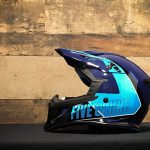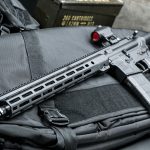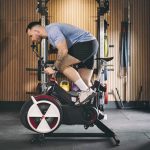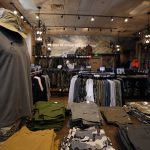Overall sales for the entire winter sport market, including specialty and chain stores, were up 2.8% in dollars to $1.76 billion for the August 2004 through January 2005 period, compared to $1.71 billion reported for the same period last year, according to the SnowSports Industries America (SIA) Retail Audit. Unit sales were down 7.3%. Sales at specialty ski and snowboard shops were up 2.6% to $1.37 billion in sales compared to $1.33 billion for the same period last season. Unit sales were down from last season 2.6%.
“Late-month snowstorms in the Midwest and Northeast helped specialty stores bring in solid January sales (up 3% over last season) and a healthy 9% jump in apparel sales,” said Christine Martinez, market research manager for SIA, the not-for-profit industry trade group that represents manufacturers and distributors of snow sports products. The SIA Retail Audit tracks and reports sales in all snow sports product categories. This is the fourth report of six that look at sales through March 31, 2005, the end of the winter season.
Overall equipment sales (alpine, snowboard, Nordic, Telemark and Randonee/AT) were down 1% in dollars as compared to last season with season-to-date sales reaching $514.4 million through January 2005. In specialty stores, alpine equipment (including skis, ski systems, boots, bindings and poles) sales increased 2% in dollars this season over last. Alpine skis, excluding integrated systems, fell 9% in dollars over last season, ending January with $89.8 million in sales. Comparing this January to last, all ski sales fell 18% in dollars.
At a season-to-date average retail price of $356, twin tip ski sales are continuing to shine, up 46% in dollars and reaching $7.3 million in sales for the period of August 2004-January 2005. Last year at this time, twin tips retailed for $384. At the end of January 2005, there were approximately 15,000 units remaining in retail inventory.
Due to most manufacturers widening their carve skis, sales shot up 63% in dollars this season after double-digit losses last season. (Leisure Trends Group has changed the carver max width definition to 69mm to reflect the wider carve skis that are being produced. Midfat skis are defined as those with waist widths between 70mm and 79mm).
Sales of fat skis increased 6% while midfat skis declined 46% in dollars, when comparing this season to the same August to January period in 2004. After last seasons strong start, junior ski sales continue to decline this season, with a 14% drop in dollar sales.
So far this season, all alpine carryover sales increased 58% in dollars. The average retail selling price increased from $207 last January to $216 this January.
By the end of January, total alpine boot sales were showing a 3% bump in dollars ($121.6 million in sales) as average retail prices moved from $253 last January to $277 this January. High performance boot dollars increased 17% and accounted for 23% of all boots sold through January. Sport performance boots, 34% of all boots sold, grew 1%. Recreation boots and soft boots suffered 12% and 42% dollar losses, respectively. At the end of January, alpine boots were 56% sold-through.
The growth of integrated systems has resulted in a decline in sales of stand-alone bindings. Sales were down 15% in dollars as compared to last season, with season-to-date sales totaling $30.4 million. Similar to junior ski sales, junior alpine binding sales also dropped (down 24% in dollars over last season).
Alpine poles fell 1% in dollars this season over last. Adult and junior poles lost 4% and 9% in dollars respectively, but carryover dollars increased 35%.
Integrated ski system sales jumped 30% in dollars when comparing this August to January period to the same period a year ago. Integrated ski systems had double digit growth in both specialty and chain stores, clearly stealing sales from non-integrated alpine skis.
So far this season, integrated systems are 58% sold-through and retailers had 95,000 remaining pairs to sell. At the end of this January, 46% of the integrated ski system units sold were midfats, 48% were carvers, 1% juniors and 4% fat skis.
Telemark ski equipment continues to show growth this season with a 19% dollar increase over last season, and reaching $5.2 million at the end of January. Telemark ski sales grew 29% in dollars and the season-to-date average retail price for Telemark skis increased from $363 to $389. At the end of January, the category was 46% sold-through. Telemark boots and bindings also managed dollar increases — 14% and 16%, respectively.
The Nordic categories continue to see sales decline this season. The Nordic ski equipment category fell 14% in dollars this season over last. Nordic skis (down 15% with $10.4 million in sales), bindings (down 15% with $3.6 million in sales) and poles (down 27% with $2.1 million in sales) all experienced dollar declines as well.
Snowboard equipments slow start continued in January. Snowboard equipment sales (including snowboards, boots and bindings) were down 4% in dollars with a total of $168.7 million in sales. Snowboards (down 6% with $77.3 million in sales) and boots (down 6% with $49.3 million in sales) experienced dollar decreases while bindings ($42.2 million in sales) inched up 2% in sales this season over last.
All mountain boards were down 9% with sales at $8.5 million by the end of January. The average retail price for an all mountain board fell from $247 to $232. Freestyle boards managed a slight 1% gain in dollars and accounted for 39% of all boards sold-through January. Average retail prices edged up from $301 last season to $303 this season. Freeride boards dipped 6% in dollars. At the end of January, all snowboards were 55% sold-through. Snowboard carryover sales increased 3% in dollars this season-to-date.
Step-in boots and bindings continued their decline this season with 24% and 79% drops in dollar sales, respectively, over last season. Non step-in boot sales also fell 8%. Carryover boots and bindings managed to gain dollars, 17% and 29%, respectively.
Snowboard apparel sales followed the trend of snowboard equipment and dropped 8% in dollars this season over last, ending January with $68.9 million in sales. Snowboard tops slid 14% in dollars while snowboard bottoms fell 10% in dollars. Snowboard apparel carryover sales jumped 45% in dollars. Carryover units accounted for 16% of all units sold.
After a strong start last year, junior snowboard apparel lost steam. Junior top and bottom dollars sank 34% and 23%, respectively.
Specialty apparel sales (including tops, bottoms, suits and snowboard) were up 9% in dollars with season-to-date sales totaling $432.5 million. At a season-to-date average retail price of $193, insulated parka sales rose 15% in dollars. At the end of January, insulated parkas were 60% sold-through. Soft shell parka sales slowed down after nearly triple digit growth in the past two seasons. Sales still managed to jump 18% in dollars as average retail prices slipped from $204 to $188. Soft shells continue to roll with healthy increases, especially as more manufacturers offer a soft shell selection in their lines. Soft shells are 54% sold-through by the end of January. After a tough season last year, shell parkas continued to rebound with a 7% dollar gain. Accounting for 9% of all shell units sold this season, junior shells shot up 117% in dollars. Vest and fleece sales continue to be impressive, up 50% and 18%, respectively, over last season.
At the end of January, 41,000 apparel suits sat in retail inventory. Sales reflected the inventory decrease and were down 17% in dollars this season over last. At the end of January, all apparel was 57% sold-through.
The accessories category in specialty stores remained flat with a 1% increase in dollars over the same period in 2004 with season-to-date sales of $421.5 million. Equipment accessories decreased 2% due to hefty dollar drops from snow decks/skates (down 49%) and snowshoes (down 32%).
Apparel accessories saw sales increase 3% for August through January of this season over last. Winter boots continue to perform well with sales up 31% reaching season-to-date sales of $15.4 million. However, dollar declines in headwear (down 3% with sales at $33.4 million), gloves (down 9% with sales at $36.2 million) and mitts (down 1% with sales at $14.7 million) helped keep category growth down.















